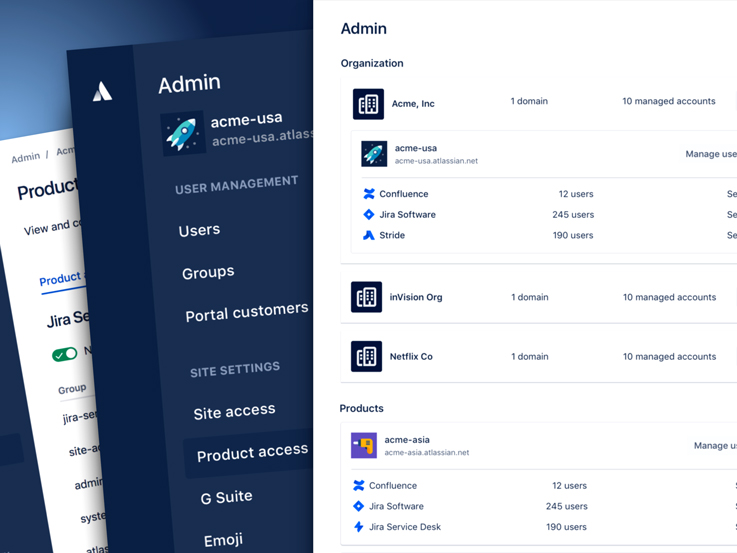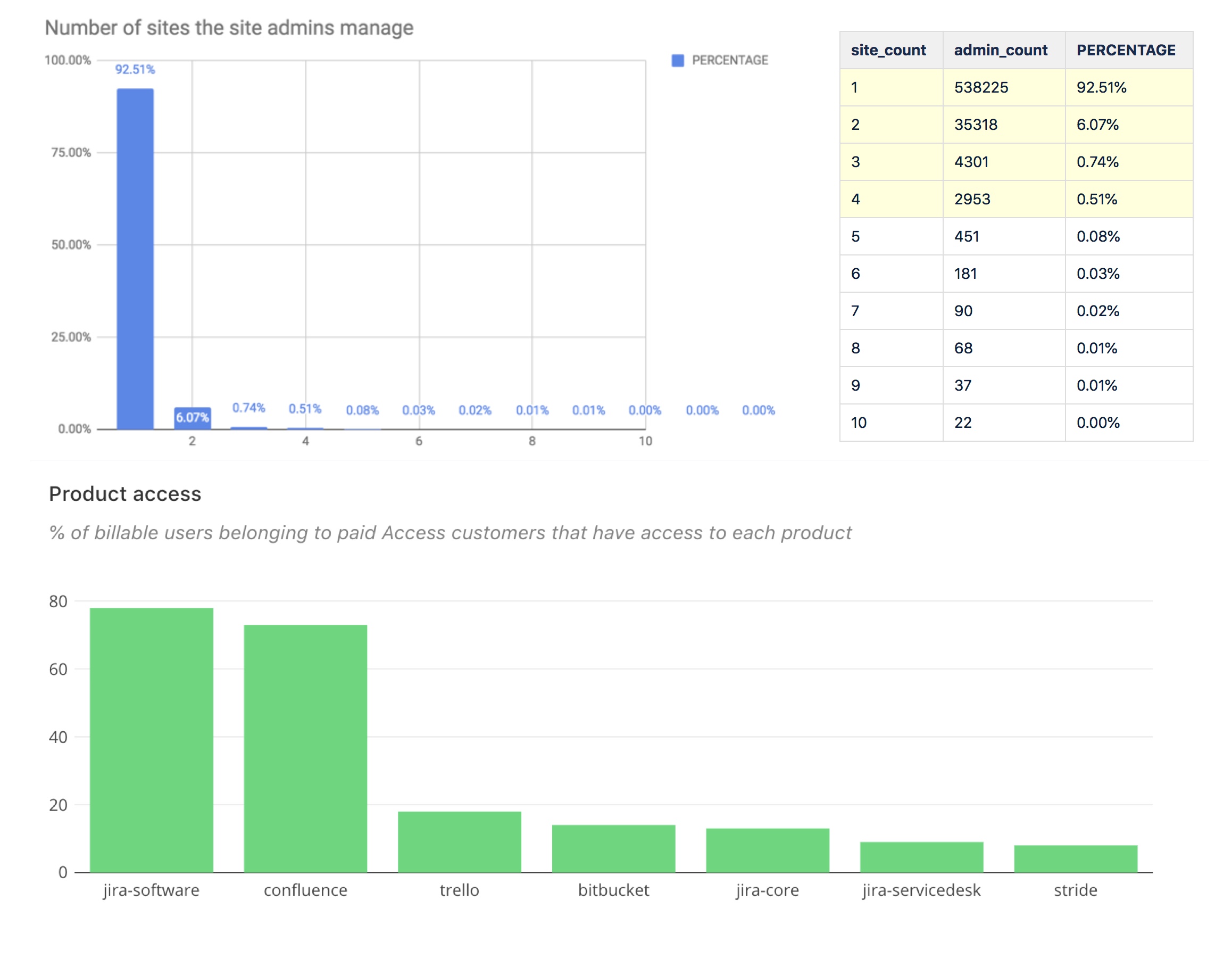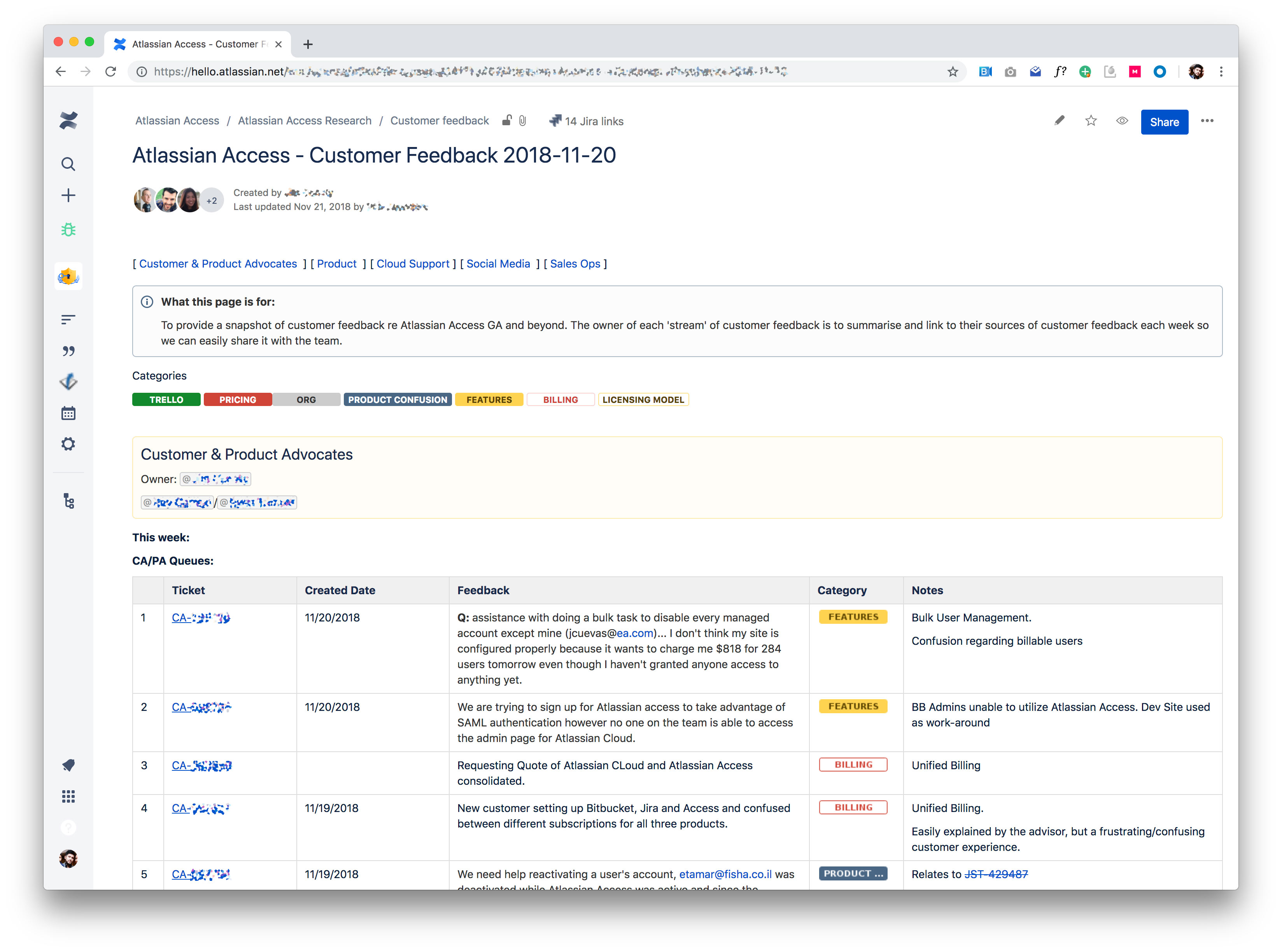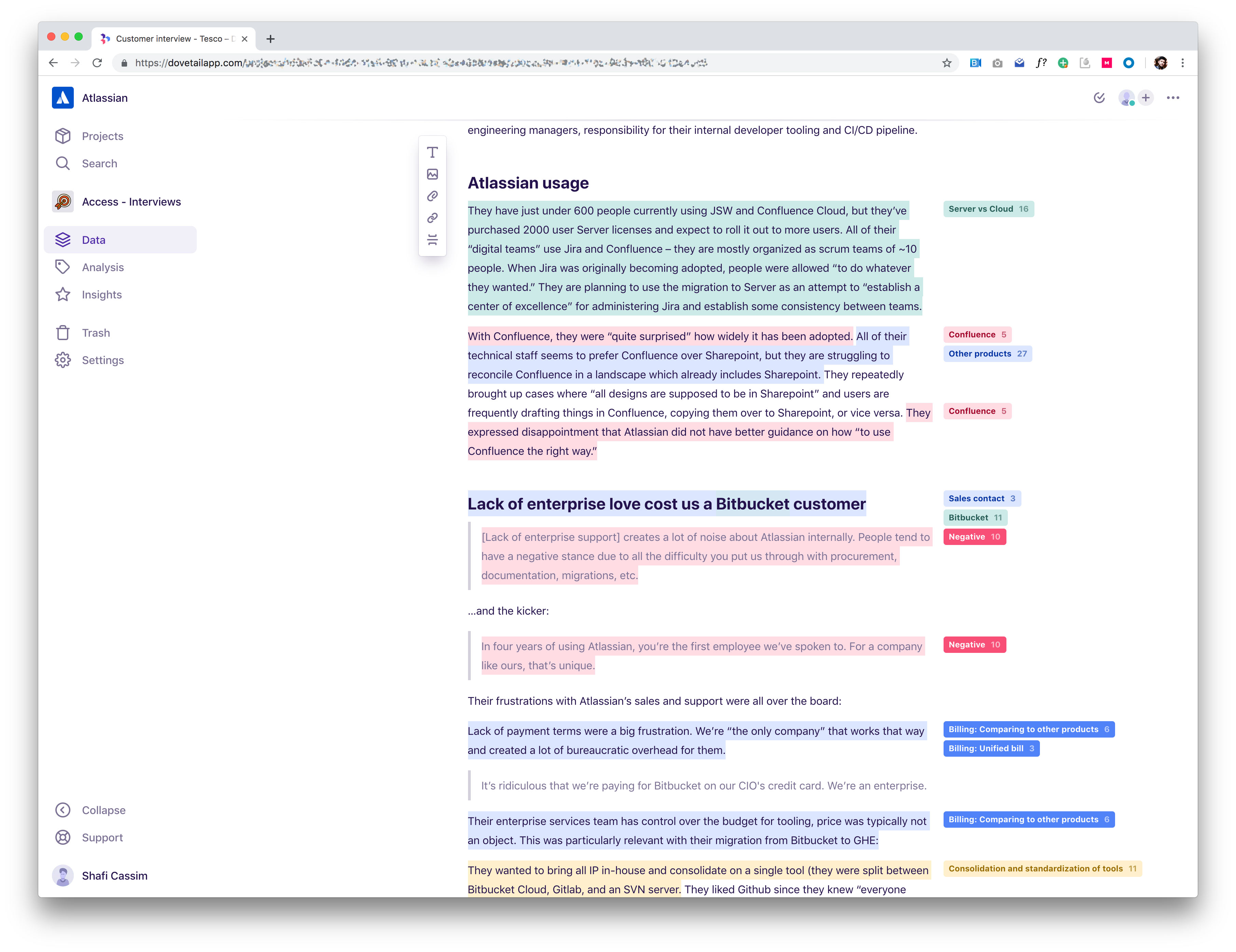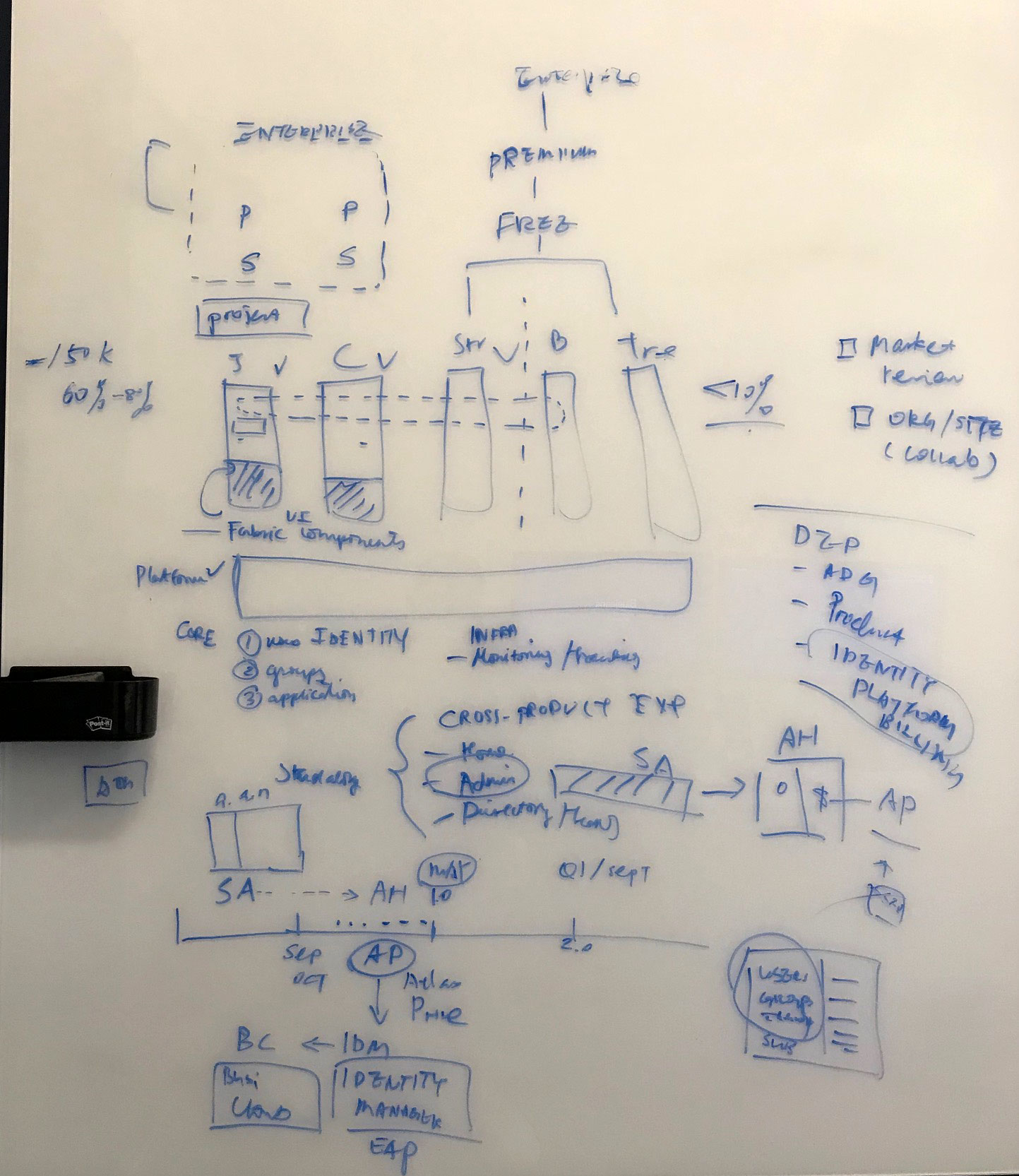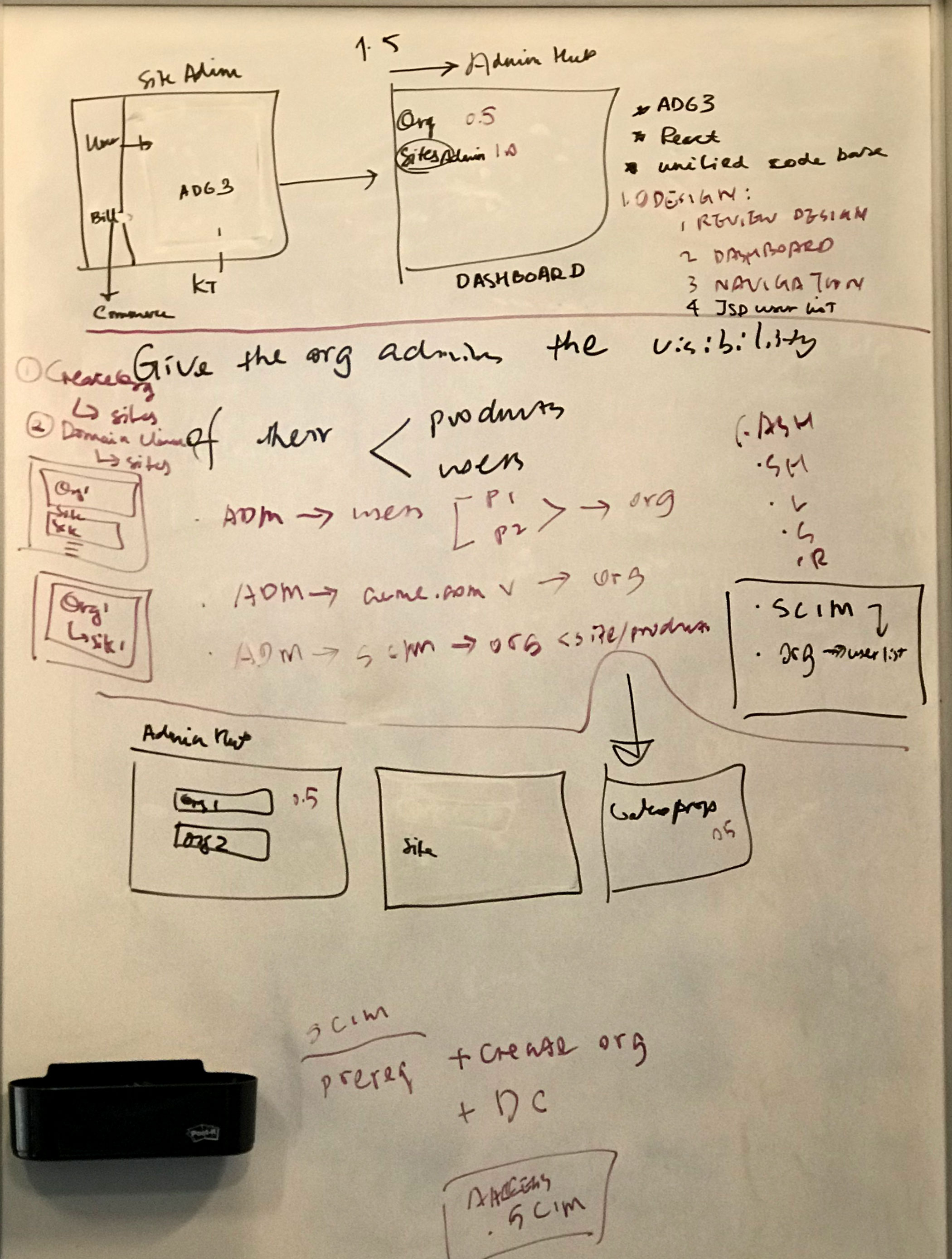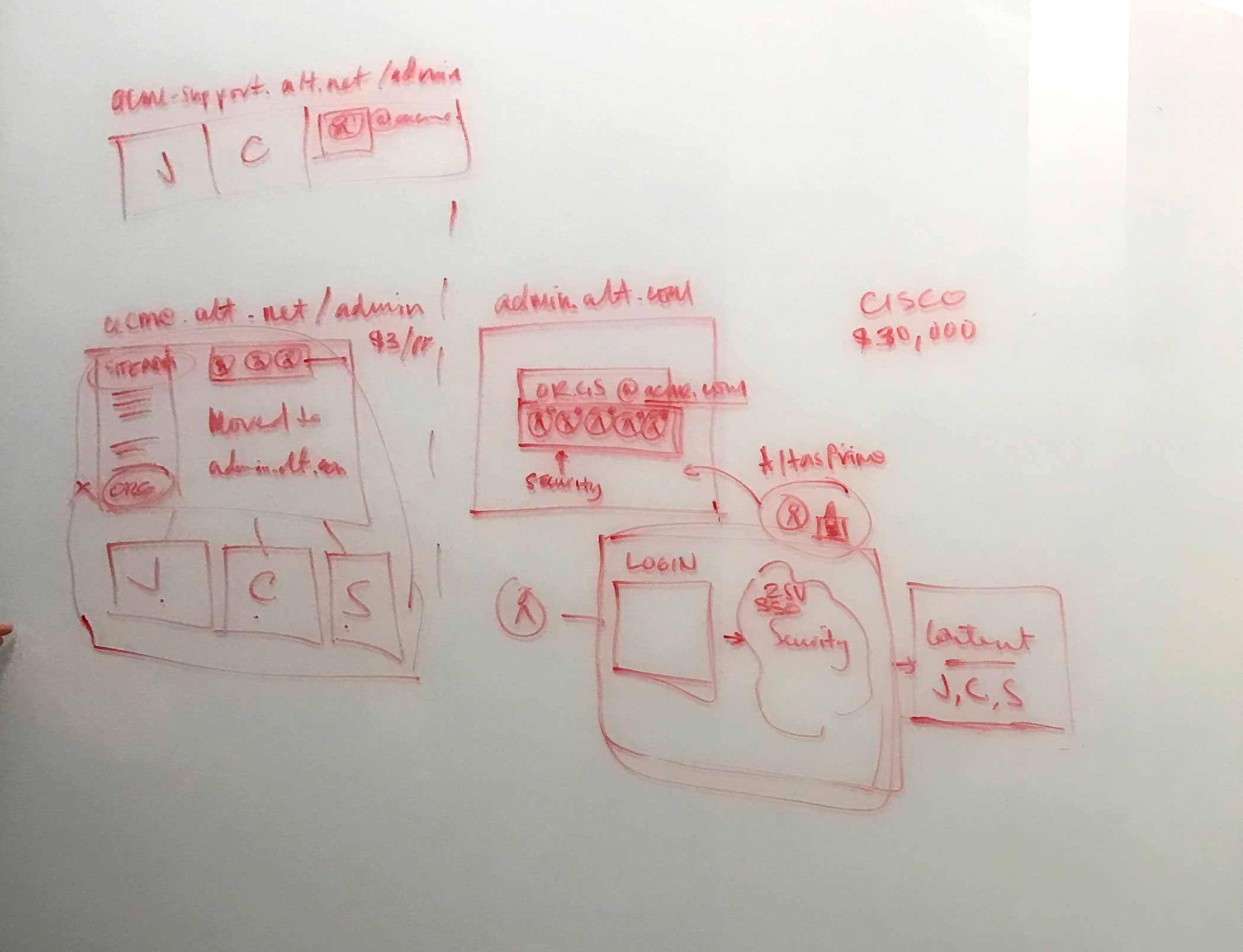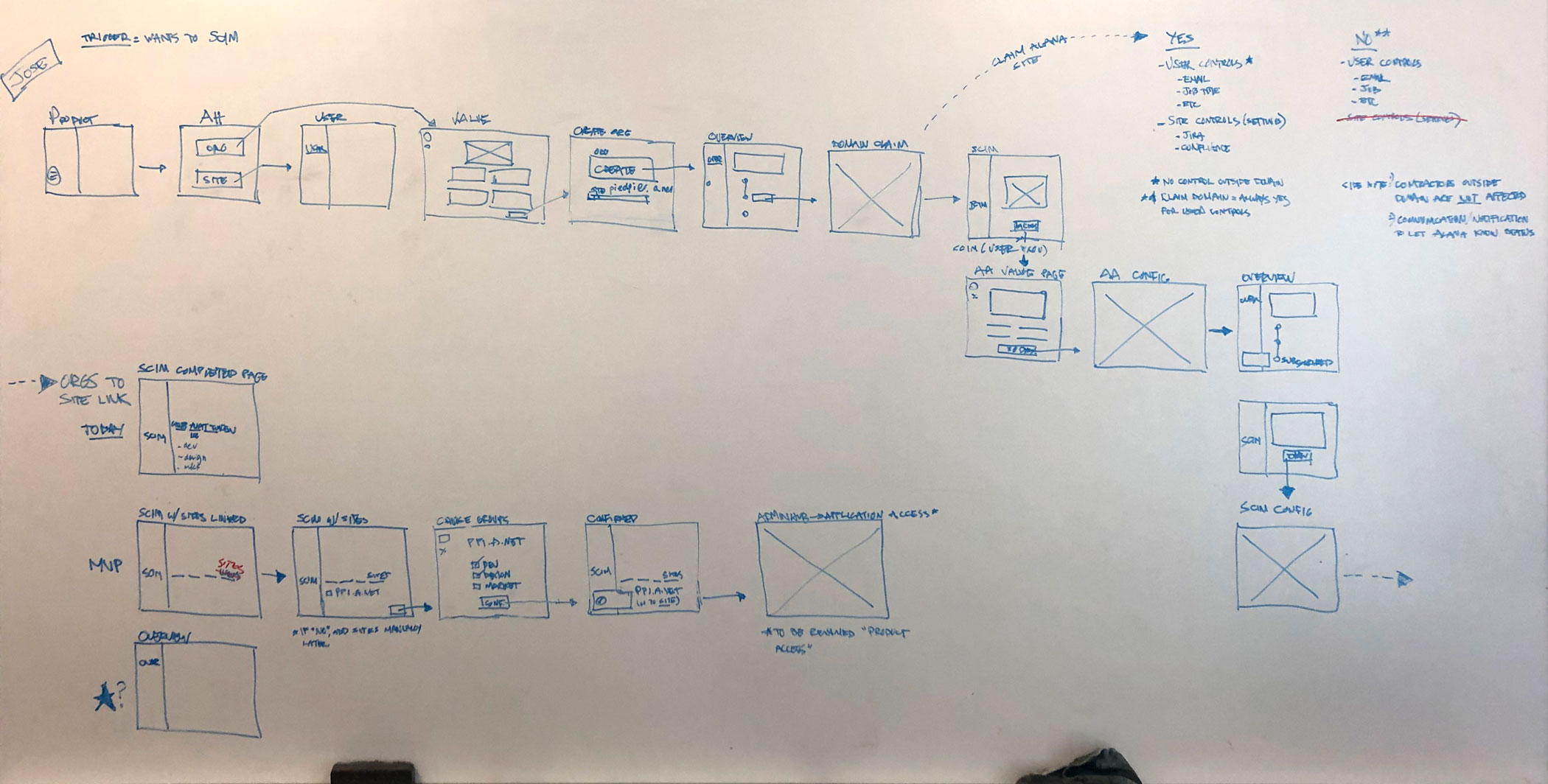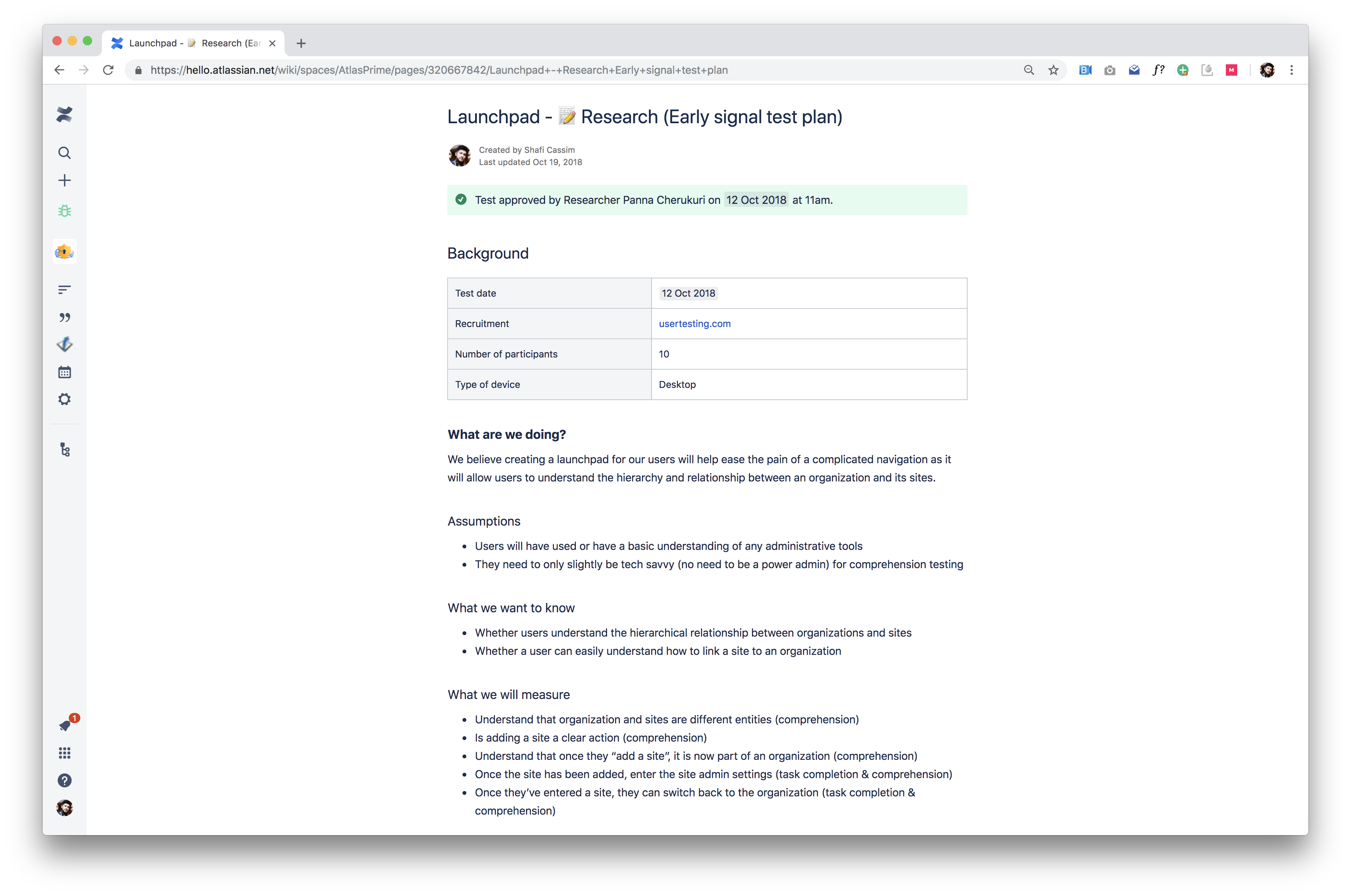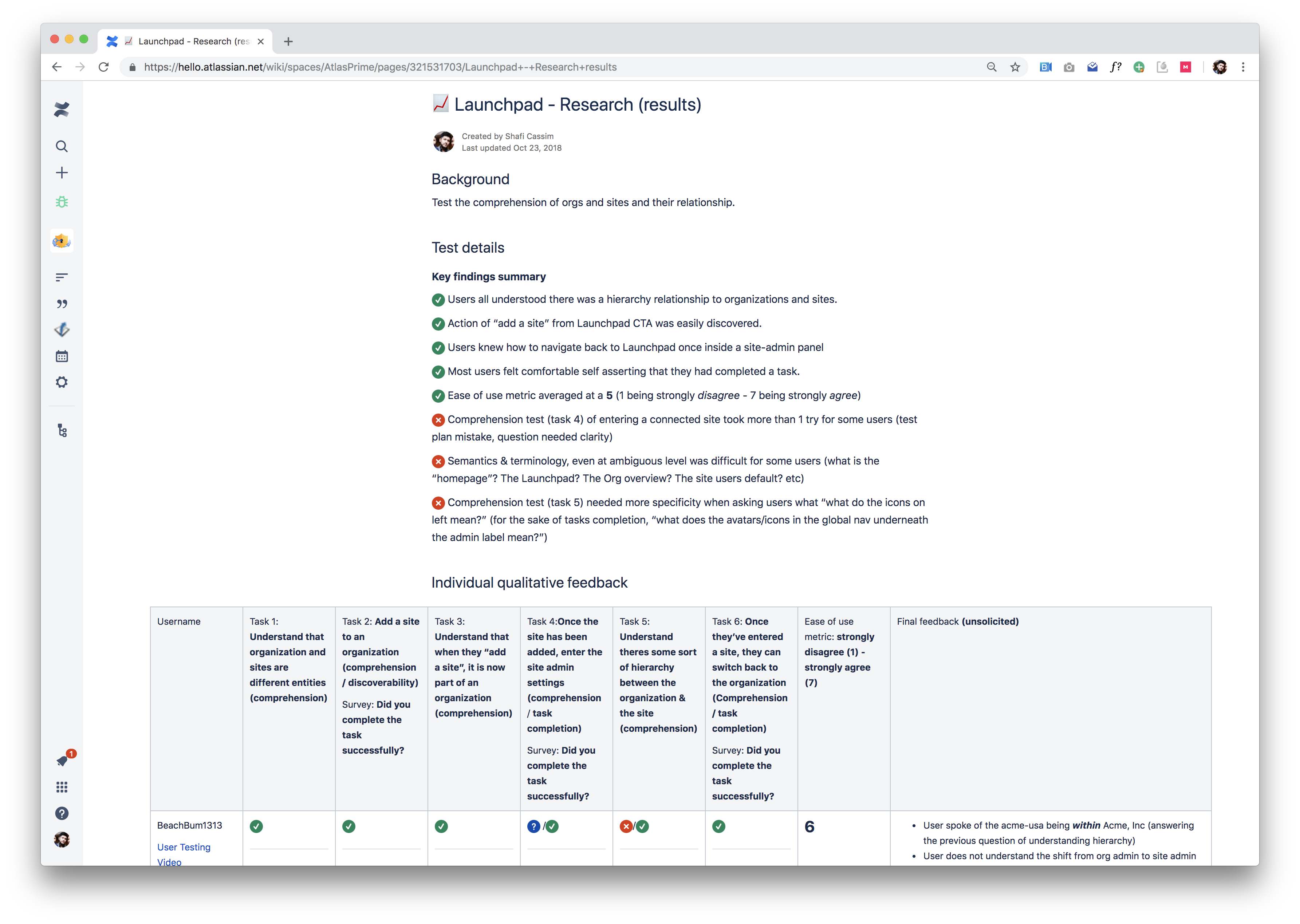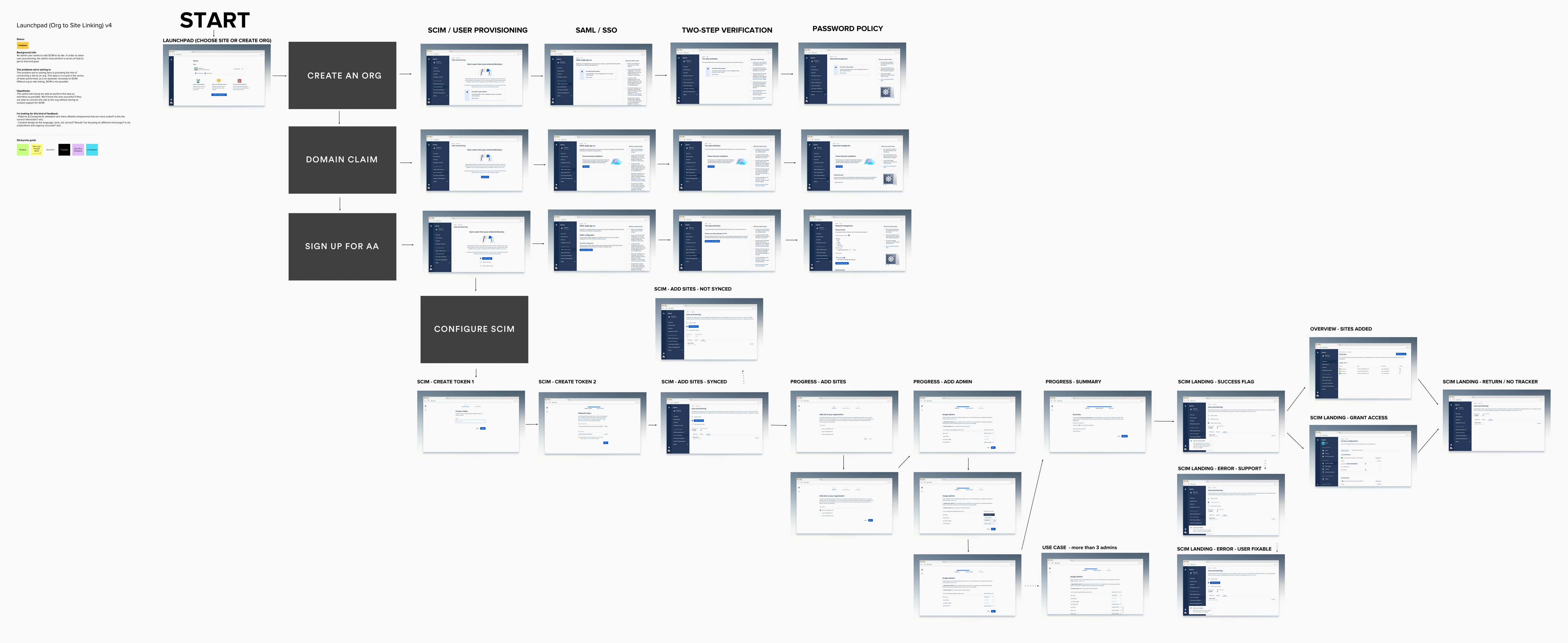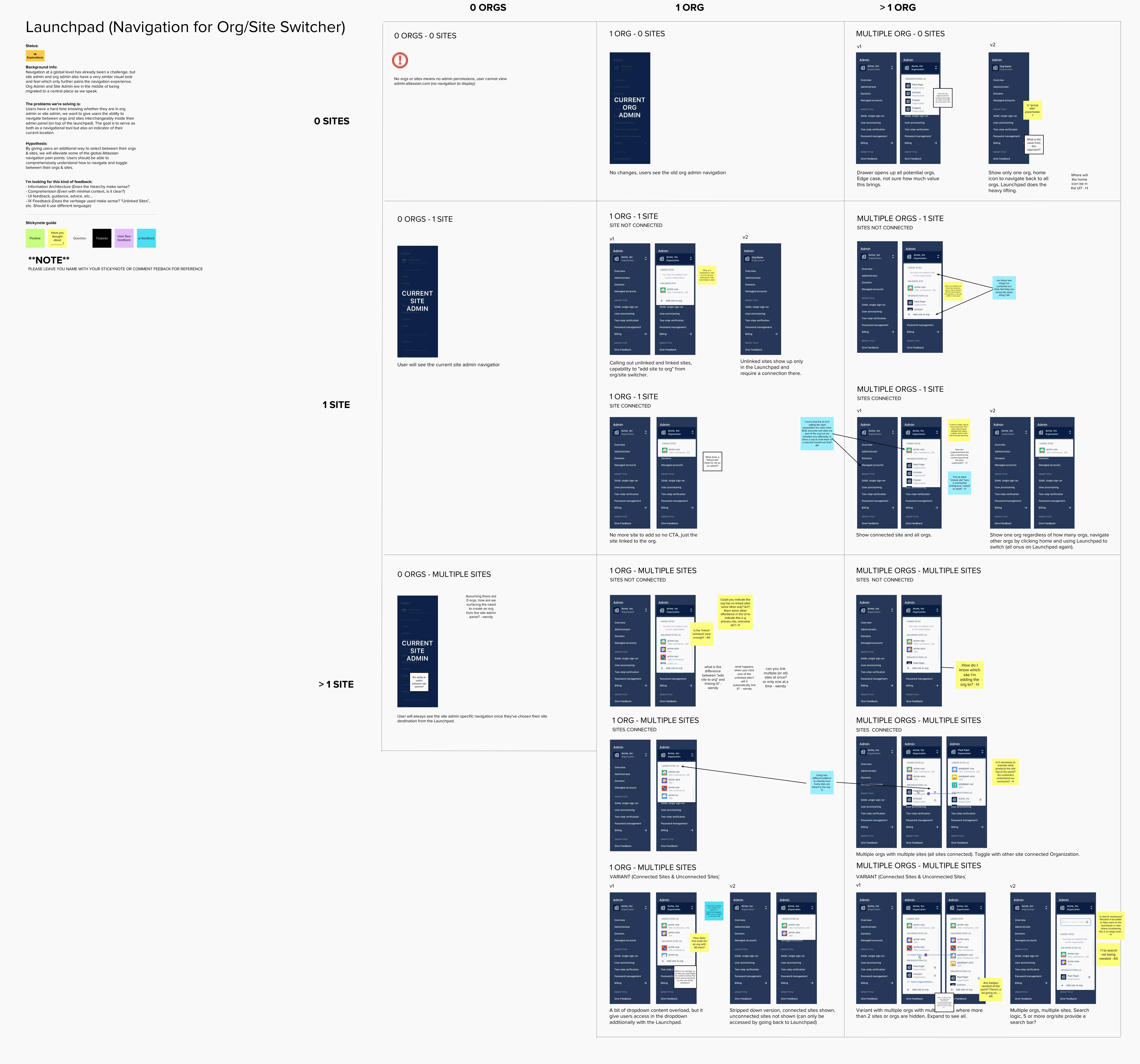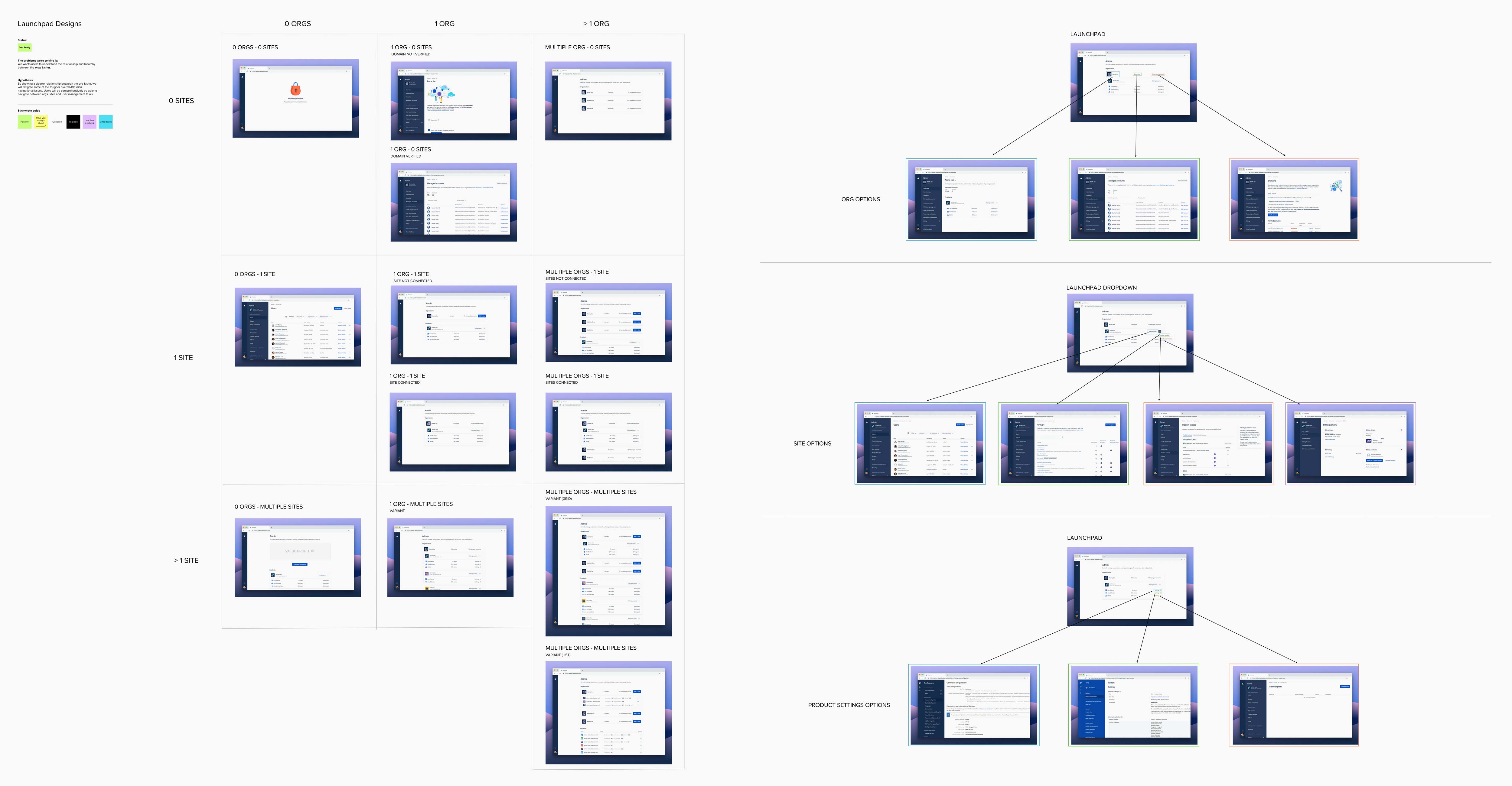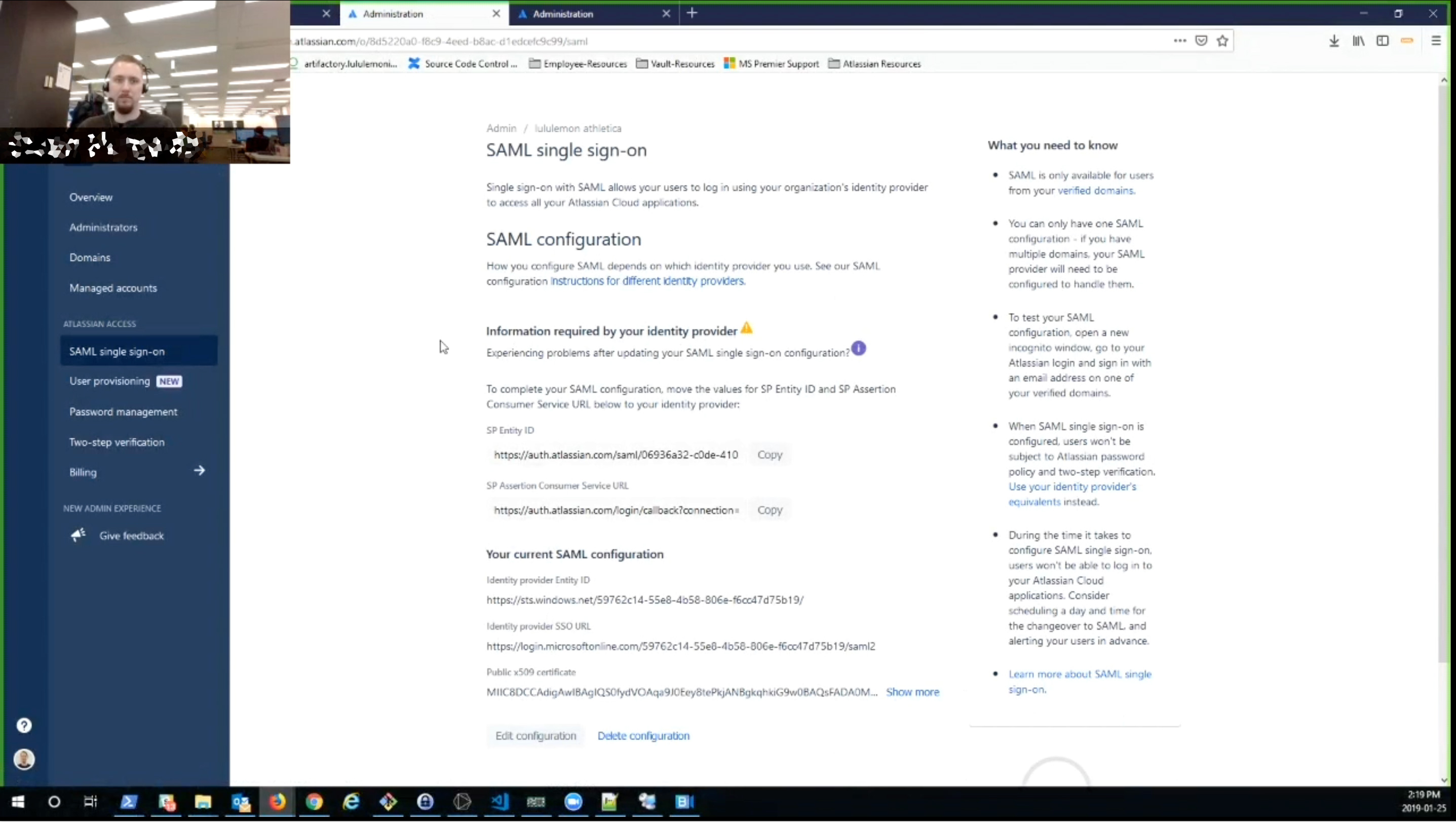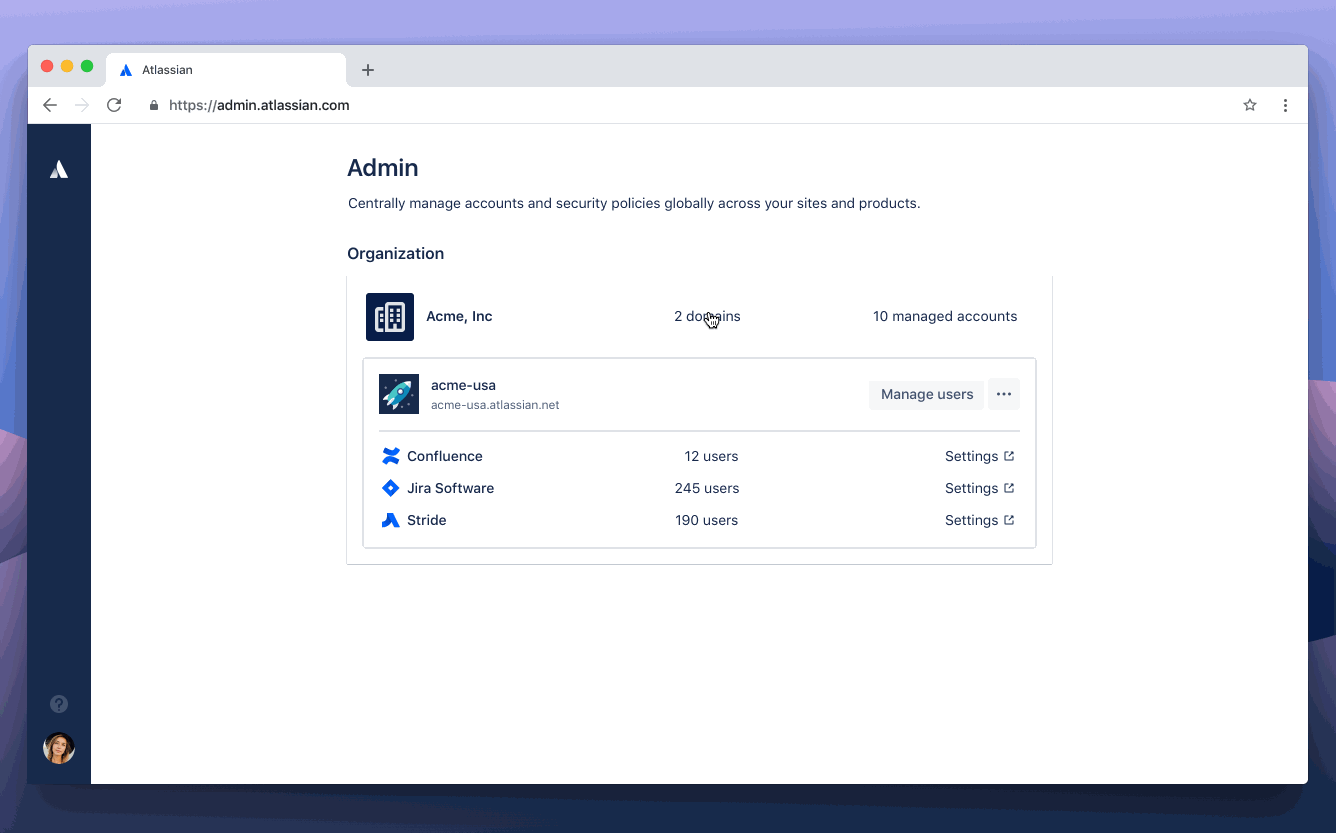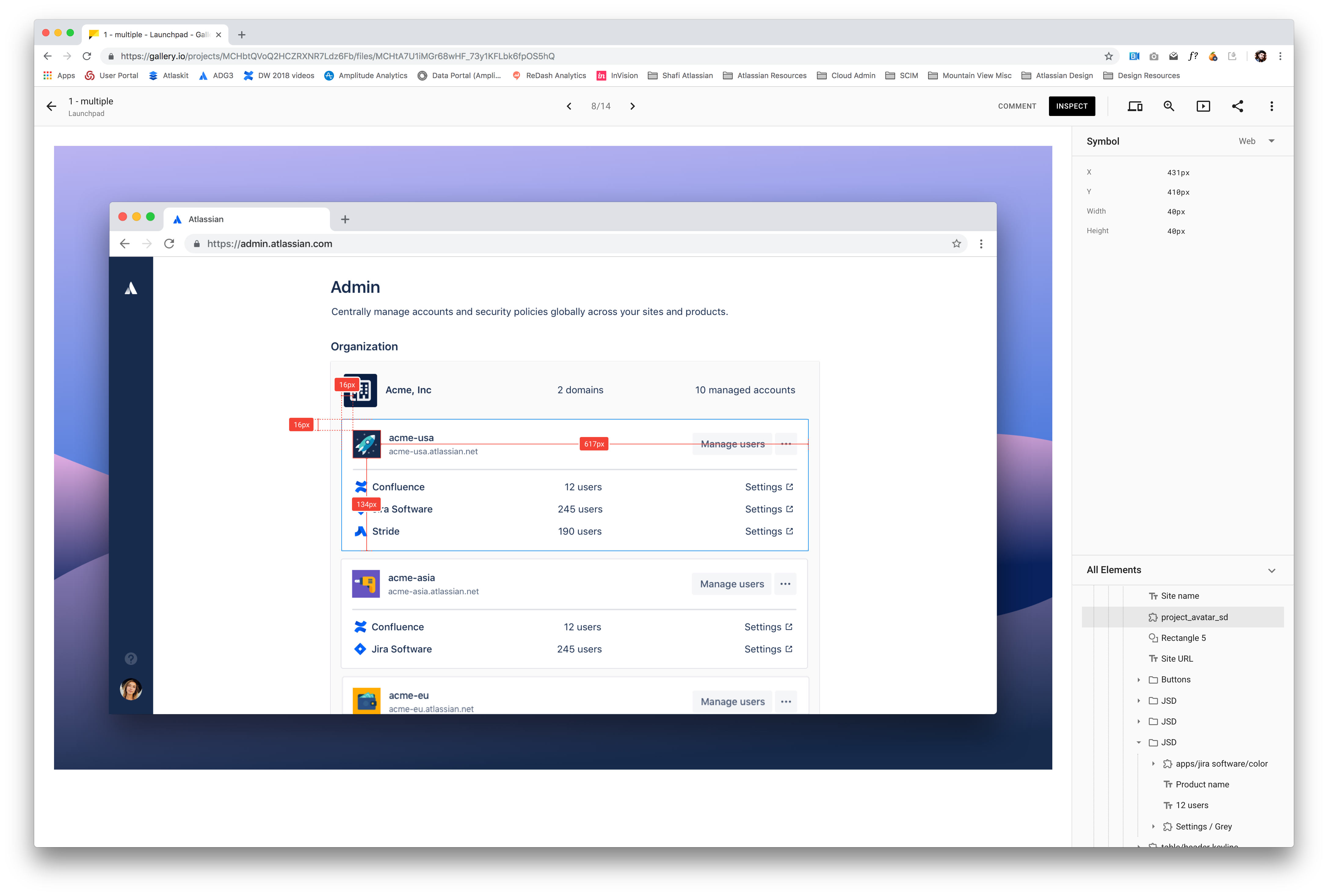FINAL PRODUCT
Examples of the Launchpad screens
UNDERSTANDING & GATHERING PHASE
This was the most complicated project I'd encountered during my time at Atlassian. I was 3 months in and there was so much domain knowledge to acquire along with product, legacy and tech debt to understand. I had many whiteboard gathering, understanding and kick-offs. During this phase I also collected all quant and qual research to begin forming a hypothesis.
Quant data and research
Qual data (customer feedback & interviews)
Whiteboarding
IDEATE PHASE
This project was so big with so many moving parts and components, that I zero'ed in on one journey first, the most complicated journey, which was "adding a site to an org" for User Provisioning. I began by designing an end-to-end wireframe of the journey as a kick off point for discussion with the team and stakeholders. Once I landed on the UX, I ran some early signal testing to validate comprehension, discovery and task completion. I did this for every moving part of the Launchpad.
Wireframes
Early signal testing research
REFINE PHASE
After refining the UX in wireframes, I then put all the UI's into high fidelity designs. I created a prototype in inVision and put it in front of users to gather first impressions and perform basic tasks. Based on stakeholder and user feedback (a lot of micro and macro decisions), I finalized the designs and prepared them for handoff.
High fidelity design flows, sparring & feedback
Atlassian admin user qual feedback
inVision prototype for stakeholder and user feedback
Final design spec handoffs
RESPONSIBILITIES
- Research
- UX
- UI
- Interaction
- Product Management
WHAT IS IT?
The Launchpad is a unified admin hub where the user will be able to ideally navigate through all the sites and products on their domain in one location.
WHAT IS THE PROBLEM?
Prior to the Launchpad, if an admin had dozens of sites (i.e. netflix-dev.atlassian.net, netflix-des.atlassian.net, etc) they would have to go to each of those unique instances to do any sort of user management. In order for an admin to “collect” all those sites under one place, they needed to create an Organization. Under this umbrella, all the sites and products become part of that Organization once the admin claims the domain (proves ownsership). Once the domain is verified, security features (Single sign-on, 2-Step verification, SCIM, Password Policy, etc) can then be applied to the Organization (all its users, products and sites) through a subscription to Atlassian Access. The problem with Organizations is that it’s a concept that is not familiar for most admin and a problem fairly unique to Atlassian (which adds to the complexity).
We know from various qualitative insights (customer interviews, in product feedback, surveys, etc), a few of the biggest problem today for admins are,
- Find it too hard to know exactly what they are administering for their end users
- Find it too hard to navigate between product projects and administrative features
- Don’t understand the concept or relationship of an Organization versus a Site
- Find it too difficult to manage their different bills
WHAT IS THE GOAL?
Our primary business goal was provide a clear link between sites and orgs in order to effectively monetize security features as part of Atlassian Access. The user need we were solving was to make it easier to understand the relationship between Organization (the umbrella) and Sites (the instances and products), a notion that was necessary but completely misunderstood or unknown. We set out to have a few high level goals:
- Unify the navigation between sites and orgs
- Make it easier to link a site and an org together
- Help users understand how their sites and orgs relate to one another
- Nurture potential security feature customers throughout the entire funnel from site admin to org creation to domain claim to Atlassian Access purchase
WHAT IS THE PROCESS?
Atlassian has a concept of a Triad which is essentially a group consisting of the Designer, Product Manager and Engineering Manager. The triad, through a collaborative process, establish a high-level product vision and the long-term roadmap for the product.
This project was so big and involved so many stakeholders that every micro detail was gone over dozens of times and communicated continuously with all the teams. At a macro level, there were three major components (and lots of smaller parts),
- The Organization and Site connection/linking (a necessity for SCIM User Provisioning that was being worked on concurrently)
- The unified admin Launchpad (which served as the new landing experience after all sites were migrated to one place)
- The Organizational overview page (the page where all Sites that were connected/linked to that Organization would show up)
The design process was broken down into a variant of the design thinking process for each of those phases listed above (details can be seen in the screens)
- Understand & Gather Phase (summarize past research, gathered and analyze existing data, document current state through confluence, had dozens of whiteboard sessions, kick-offs, etc)
- Ideate Phase (Explored the problem space, concept sketches, low fidelity wireframes, early signal testing, begin scheduling customer interviews, in depth stakeholder feedback and sparring, etc)
- Refine Phase (Test prototype in front of customers for insights, finalize design based on stakeholder & customer feedback, prepare designs for dev handoff)
CONCLUSION
The project, although encountered a few hurdles in terms of so many outside dependencies, hit it’s OKR date of Q2 2018 (Australian quarter, Dec 2018). Customer feedback was relatively positive as we resolved several of the user pain points (but not all of them, billing is still the overall biggest pain point). We allowed Organizational admins to navigate all sites within their domains and Site admins to have quick access to their top tasks (add users to groups, deactivate users, adding groups, create groups, etc).
This project also allowed me to have a lot of personal growth as I’d it was not smooth by any means. Miscommunication and triad un-alignment surfaced during stakeholder feedback and forced us to re-evaluate our team health monitor. I came out of it learning more about myself than I did the project.

